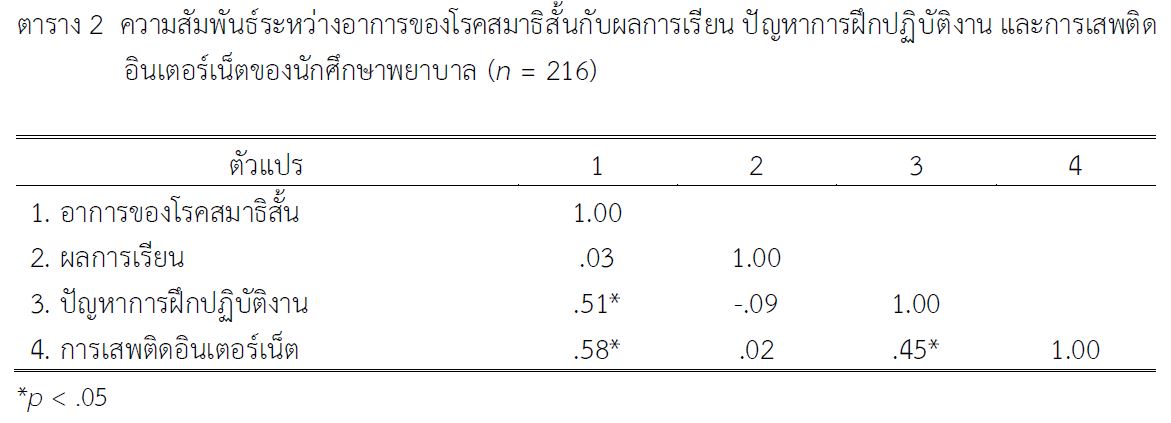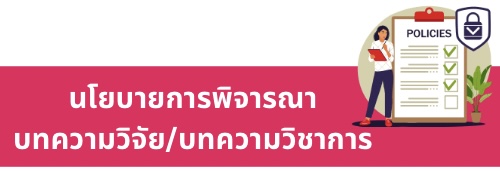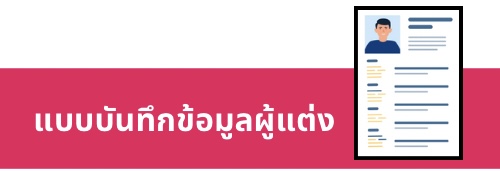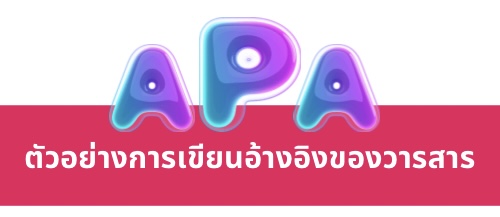ความสัมพันธ์ระหว่างอาการของโรคสมาธิสั้นกับผลการเรียน ปัญหาการฝึกปฏิบัติงาน และการเสพติดอินเตอร์เน็ตของนักศึกษาพยาบาล
คำสำคัญ:
โรคสมาธิสั้น, ผลการเรียน, ปัญหาการฝึกปฏิบัติงาน, การเสพติดอินเตอร์เน็ต, นักศึกษาพยาบาลบทคัดย่อ
การวิจัยครั้งนี้เป็นงานวิจัยเชิงบรรยายเพื่อศึกษาความสัมพันธ์ระหว่างอาการของโรคสมาธิสั้นกับผลการเรียน ปัญหาการฝึกปฏิบัติงาน และการเสพติดอินเตอร์เน็ตของนักศึกษาพยาบาล ตัวอย่าง คือ นักศึกษาหลักสูตรพยาบาลศาสตรบัณฑิต ชั้นปีที่ 3 และ 4 สถาบันการศึกษาทางการพยาบาลแห่งหนึ่งในภาคตะวันออกเฉียงเหนือ จำนวน 216 คน เก็บรวบรวมข้อมูลโดยใช้แบบประเมินอาการโรคสมาธิสั้น-อยู่ไม่นิ่งในผู้ใหญ่ ฉบับที่ 1.1 แบบสอบถามการฝึกปฏิบัติงานบนหอผู้ป่วยตามความคิดเห็นของนักศึกษาพยาบาล และแบบสอบถามการเสพติดอินเตอร์เน็ต ซึ่งมีความเที่ยงจากการวิเคราะห์สัมประสิทธิ์แอลฟาของครอนบาค เท่ากับ .94, .95 และ .96 ตามลำดับ วิเคราะห์ข้อมูลโดยใช้สถิติบรรยาย และสถิติสหสัมพันธ์ของสเปียร์แมน
ผลการวิจัยพบว่า อาการของโรคสมาธิสั้นมีความสัมพันธ์ทางบวกกับปัญหาการฝึกปฏิบัติงาน และการเสพติดอินเตอร์เน็ตของนักศึกษาพยาบาล อย่างมีนัยสำคัญทางสถิติ (r = .51, p < .05; r = .58, p < .05 ตามลำดับ) แต่ไม่มีความสัมพันธ์กับผลการเรียนของนักศึกษาพยาบาล (r= .03, p > .05) ผลการวิจัยครั้งนี้ สามารถนำไปเป็นข้อมูลพื้นฐานสำหรับพัฒนาแนวทางการช่วยเหลือนักศึกษาพยาบาลที่มีอาการของโรคสมาธิสั้น เพื่อลดปัญหาการฝึกปฏิบัติงานและป้องกันการใช้อินเตอร์เน็ตที่มากเกินไปได้ในอนาคต
Downloads
เอกสารอ้างอิง
Afshan, N., Bodepudi, S., Benerji, T., Kodali, M., & Parvathaneni, K. M. (2023). Adult ADHD and internet addiction among undergraduate medical college students. IP Indian Journal of Neurosciences, 9(1), 29-35.
American Psychiatric Association. (2013). Diagnostic and statistical manual of mental disorders (DSM-V) (5th ed.). Arlington, VA.
Arnsten, A. F. T. (2009). The emerging neurobiology of attention deficit hyperactivity disorder: The key role of the prefrontal association cortex. The Journal of Pediatrics, 154(5), I-S43.
Atsariyasing, W. (2018). Chapter 15: ADHD in adults. In C. Pornnoppadol (Ed.), Attention deficit hyperactivity disorder (pp. 367-386). Bangkok: Siriraj Press.
Bradshaw, M. J., & Salzer, J. S. (2003). The nursing student with attention deficit hyperactivity disorder. Nurse Educator, 28(4), 161-165.
Brand, M., Young, K. S., & Laier, C. (2014). Prefrontal control and internet addiction: A theoretical model and review of neuropsychological and neuroimaging findings. Frontiers in Human Neuroscience, 8, 375.
Chanthasin, W., Kaewchinda, M., & Somanandana, V. (2021). A study of internet addiction among college student: Quality of life and other factors. Rajapark Journal, 15(38), 108-122.
Daffner, M., DuPaul, G., Anastopoulos, A. D., & Weyandt, L. L. (2022). From orientation to graduation: Predictors of academic success for freshmen with ADHD. Journal of Postsecondary Education and Disability, 35(2), 113-130.
Davidson, K. M., Rourke, L., Sealock, K. L., & Mak, W. Y. (2018). Coaching nursing students with attention deficit hyperactivity disorder in clinical settings: A case study. Journal of Nursing Education and Practice, 8(4), 10-15.
Dündar, C., & Karabıçak, C. (2022). Problematic internet use associated with attention deficit hyperactivity disorder in Turkish college students. Erciyes Medical Journal, 44(22), 143-147.
Dvorsky, M. (2014). Predicting the academic functioning of college students with attention-deficit/ hyperactivity disorder: The importance of executive functions and parent report (Master of science). Faculty of Psychology, Virginia Commonwealth University, Richmond, Virginia.
Gentile, J. P., Atiq, R., & Gillig, P. M. (2006). Adult ADHD: Diagnosis, differential diagnosis, and medical management. Psychiatry (Edgmont), 3(8), 25-30.
Green, A. L., & Rabiner, D. L. (2012). What do we really know about ADHD in college students? Neurotherapeutics, 9, 559-568.
Hawi, N., & Samaha, M. (2024). Relationships of gaming disorder, ADHD, and academic performance in university students: A mediation analysis. PLOS ONE, 19(1), e0300680.
Hotez, E., Kashia, A. R., Fernandes, P., Eagan, K., Shea, L., & Kuo, A. A. (2022). A national cross-sectional study of the characteristics, strengths, and challenges of college students with attention deficit hyperactivity disorder. Cureus, 14(1), e21520.
Kessler, R. C., Adler, L., Ames, M., Demler, O., Faraone, S., Hiripi, E., . . . Walters, E. E. (2005). The World Health Organization ADHD Self-Report Scale (ASRS): A short screening scale for use in the general population. Psychological Medicine, 35(2), 245-256.
Kiatrungrit, K., Putthisri, S., Hongsanguansri, S., Wisajan, P., & Jullagate, S. (2017). Validity and reliability of adult ADHD self-report scale Thai version (ASRS-V1.1 TH). Shanghai Archives of Psychiatry, 29(4), 218-227.
Lagacé-Leblanc, J., Massé, L., & Rousseau, N. (2022). Academic impairments face by college students with attention-deficit hyperactivity disorder: A qualitative study. Journal of Postsecondary Education and Disability, 35(2), 131-144.
Limsuwan, N. (2007). Adult ADHD. Retrieved from https://www.rama.mahidol.ac.th/ramamental/
Marcellus, L. (2004). Are we missing anything? Pursuing research on attrition. Canadian Journal of Nursing Research, 36(3), 82-98.
Meaux, J. B., Green, A., & Broussard, L. (2009). ADHD in the college students: A block in the road. Journal of Psychiatric and Mental Health Nursing, 16(3), 248-256.
Meeks, L. M., Plegue, M., Swenor, B. K., Moreland, C. J., Jain, S., Grabowski, C. J., . . . Kim, M. H. (2022). The performance and trajectory of medical students with disabilities: Results from a multisite, multicohort study. Academic Medicine, 97(3), 389-397.
Nakthewan, T., & Sangkool, J. (2020). The screening of adult attention deficit hyperactivity disorder and related factors in the first-year students at Prince of Songkla University. Journal of Mental Health of Thailand, 28(1), 16-29.
Sacchetti, G. M., & Lefler, E. K. (2014). ADHD symptomology and social functioning in college students. Journal of Attention Disorders, 21(12), 1009-1019.
Sedgwick-Müller, J. A., Müller-Sedgwick, U., Adamou, M., Catani, M., Champ, R., Gudjónsson, G., . . . Asherson, P. (2022). University students with attention deficit hyperactivity disorder (ADHD): A consensus statement from the UK Adult ADHD Network (UKAAN). BMC Psychiatry, 22, 292.
Shebl, E. M., Abu Bakr Elsaid, N. M., Hassan, H. A., Kamal, D., & Araby E. (2023). Attention-deficit hyperactivity disorder in Egyptian medical students and how it relates to their academic performance. Journal of Family and Community Medicine, 30(4), 287-294.
Shen, Y., Chan, B. S. M., Liu, J., Meng, F., Yang, T., He, Y., . . . Zhang, X. Y. (2018). Estimated prevalence and associated risk factors of attention deficit hyperactivity disorder (ADHD) among medical college students in Chinese population. Journal of Affective Disorders, 241, 291-296.
Talerd, W., & Rungruang, K. (2016). A study of practical problem on the ward from nurse student opinion in Boromarajanani College of Nursing, Surin. Journal of Nursing and Education, 9(3), 112-124.
Teherani, A., & Papadakis, M. A. (2013). Clinical performance of medical students with protected disabilities. JAMA, 310(21), 2309-2311.
Wongnoi, A., Nintachan, P., & Sangon, S. (2021). The relationships of resilience, practical problems on the ward and social support to stress among nursing students. The Journal of Psychiatric Nursing and Mental Health, 35(2), 73-94.
Young, K. S. (1998). Internet addiction: The emergence of a new clinical disorder. Cyber Psychology & Behavior, 1(3), 237-244.
Zhang, W., Jiang, X., Yang, L., & Zhu, W. (2022). Adult attention deficit and hyperactivity disorder symptoms and internet addiction in college students: Prevalence and differential association. European Journal of Psychology and Education Research, 5(1), 33-43.

ดาวน์โหลด
เผยแพร่แล้ว
รูปแบบการอ้างอิง
ฉบับ
ประเภทบทความ
สัญญาอนุญาต
ลิขสิทธิ์ (c) 2024 วารสารพยาบาลตำรวจและวิทยาศาสตร์สุขภาพ

อนุญาตภายใต้เงื่อนไข Creative Commons Attribution-NonCommercial-NoDerivatives 4.0 International License.
ผลงานที่ได้ตีพิมพ์แล้วจะเป็นลิขสิทธิ์ของวารสารพยาบาลตำรวจ














